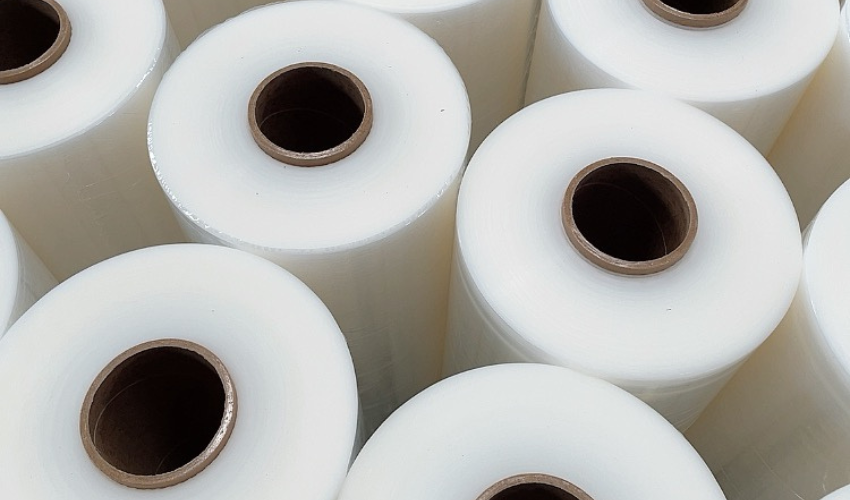
Industrial cling wrap is a type of highly stretchable plastic film designed specifically for securing and protecting goods in industrial and commercial settings. Unlike regular cling wrap used in households, industrial cling wrap offers enhanced strength, durability, and elasticity to withstand the rigors of transport and storage. Its primary purpose is to hold items tightly together, ensuring stability and reducing movement during transit. Industrial cling wrap is also commonly referred to as stretch wrap or plastic wrap, but these terms may slightly differ in application. While stretch wrap typically involves securing loads on pallets, cling wrap focuses on tight coverage and protection. Industrial cling wrap is used in various industries and is often used along with bunding stretch film for various packaging applications to help improve efficiency in handling, maintaining product integrity, and minimizing damage. Industrial cling wrap, a durable plastic film, secures goods for industrial or home use, like the 15″ x 1000′ 60-gauge stretch wrap with handles.
Why Choose Our Stretch Film Over Competitors?
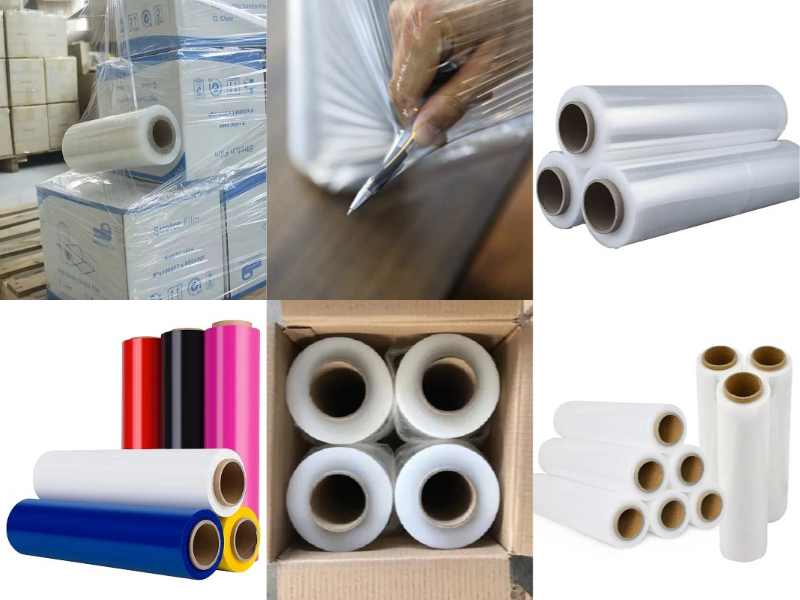
| Attributes | Details |
|---|---|
| Place of Origin | Fujian, China |
| Brand Name | PWP Stretch Film |
| Product Name | Industrial Cling Wrap |
| Material | Polyethylene |
| Features | Moisture-proof, Waterproof, Non-toxic, Shockproof |
| Hardness | Soft |
| Processing Type | Casting, Blow Molding |
| Transparency | Transparent, Opaque |
| Color | Customized |
| Thickness | Customized |
| Length | Customized |
| Width | Customized |
| Size | Customized |
| Weight | Customized |
| Surface | Smooth |
| OEM | Avaliable |
| Certificate | ISO, REACH, ROHS |
| Elongation at Break | 300% |
| Use | Hand Roll, Machine Roll |
| Packaging | Standard Carton Packaging |
| Sales Unit | Single Item |
Industrial cling wrap offers multiple advantages that make it essential in industrial and commercial environments. Its primary purpose goes beyond simple packaging, contributing significantly to product protection, stability, and efficiency across various industries.
These combined benefits make industrial cling wrap a reliable choice for industries prioritizing product protection, stability, and operational efficiency.
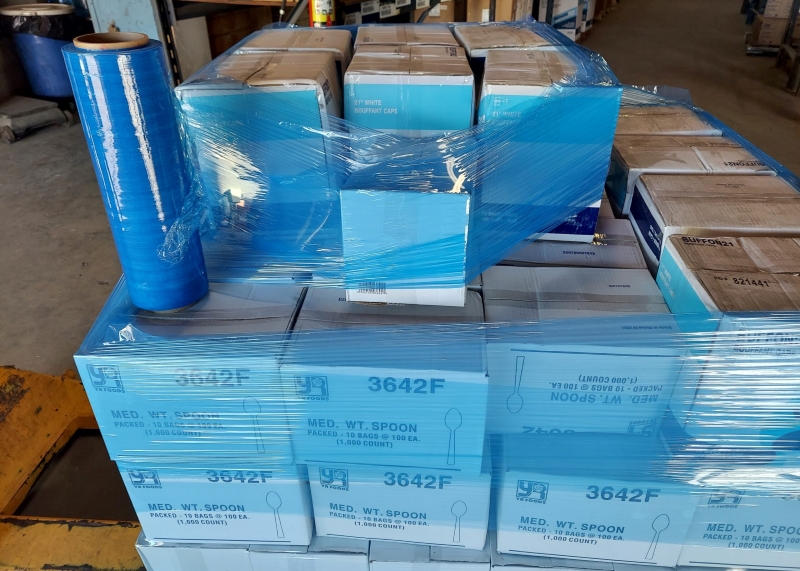
Industrial cling wrap comes in various specialized types, each designed to meet specific industrial needs. Understanding these types can help in selecting the most appropriate option for different applications, ensuring optimal protection, stability, and efficiency.
This type of industrial cling wrap is pre-stretched during manufacturing, making it easier and faster to apply. Because it requires less force to wrap around goods, pre-stretch wrap saves on application time and labor costs. Additionally, it uses less film per load, resulting in cost savings. However, since pre-stretch wrap is thinner, it may offer lower puncture resistance compared to other types, making it more suitable for lighter loads.
UV-resistant industrial saran wrap is treated to withstand prolonged sunlight exposure, making it ideal for outdoor storage or long-haul shipping where products are exposed to natural light. This type helps protect against photodegradation, which can weaken standard films over time when exposed to UV rays. While it offers enhanced durability outdoors, UV-resistant cling wrap is often more expensive and may be made to order based on specific requirements.
Designed to prevent electrostatic discharge, anti-static cling wrap is essential for packaging electronics and other sensitive items. This type of industrial cling film wrapping minimizes the risk of static build-up, which can be harmful to electronics or flammable materials. Although it offers excellent protection in these contexts, anti-static cling wrap can be slightly opaque and more costly than standard wraps.
Colored industrial cling wrap is useful for color-coding shipments or adding privacy to the contents. Different colors can help identify various product types or shipment destinations, improving organizational efficiency in warehouses or distribution centers. However, one drawback is that the color can obscure visibility of the contents, making it less suitable when easy identification is required. Colored wraps are often custom-made, adding to the lead time and cost.
Vented cling wrap features small perforations that allow air circulation, making it ideal for items needing ventilation, such as fresh produce. The airflow provided by vented wrap prevents moisture build-up and reduces spoilage, especially for temperature-sensitive goods. However, vented cling wrap offers less strength than solid wrap, which can be a drawback for heavier or bulkier items. This type of wrap is often used in the food industry to ensure product freshness during transport and storage.
Each type of industrial cling wrap provides unique benefits, helping businesses choose the best solution based on load requirements and specific environmental conditions.
When purchasing industrial cling wrap, businesses must carefully evaluate various factors to ensure they select the right product and manufacturer for their needs. Below are the essential aspects to consider during the purchasing process, tips for choosing a reliable manufacturer, and the advantages of partnering with PWP Stretch Film.
Material Quality
Ensure the cling wrap is made of high-quality materials, such as LLDPE, for superior strength, elasticity, and tear resistance. Lower-grade films may compromise load stability.
Gauge Thickness
Select the appropriate gauge (e.g., 60, 80, or higher) based on the weight and sharpness of the goods being wrapped. Thicker gauges are ideal for heavy-duty applications.
Stretchability and Cling
Evaluate the film’s stretch ratio and cling properties to ensure it can tightly secure goods without slipping.
Environmental Compatibility
Opt for eco-friendly or biodegradable options if sustainability is a priority for your business.
Customization Options
Look for industrial cling wrap available in different sizes, colors, or functionalities, such as UV resistance or high transparency, to suit specific needs.
Reputation and Experience
Partner with a manufacturer known for delivering consistent quality and reliable service. Look for customer reviews and industry experience.
Certifications and Compliance
Ensure the manufacturer adheres to international standards for quality and environmental safety, such as ISO certifications or eco-labels.
Product Range
Choose a manufacturer offering a wide range of industrial cling wraps, including various gauges, materials, and specialty films, to meet diverse requirements.
Technology and Innovation
A reliable manufacturer invests in advanced manufacturing techniques to provide superior stretch films and innovative solutions like smart or sustainable wraps.
Customer Support
Evaluate the manufacturer’s support services, including technical guidance, customization capabilities, and after-sales support.
At PWP Stretch Film, we pride ourselves on producing premium industrial cling wraps using advanced materials like LLDPE. Our wraps are designed for exceptional durability and elasticity, meeting the highest standards for industrial applications.
High-Quality Products
We specialize in delivering top-notch cling wraps that ensure strength and reliability. Our products are crafted with meticulous attention to quality, ensuring they perform flawlessly in demanding industrial environments.
Customization Expertise
We understand that every business has unique needs. That’s why we offer a wide range of customizable solutions, including various gauges, sizes, and specialty films such as eco-friendly and UV-resistant options.
Sustainability Focus
Sustainability is at the core of our operations. We prioritize environmentally friendly manufacturing processes, offering recyclable and biodegradable products that align with global sustainability goals.
Innovative Manufacturing Techniques
Our state-of-the-art technology allows us to produce cling wraps with superior stretchability, puncture resistance, and load stability. Each product is tailored to meet the precise needs of our industrial clients, ensuring efficient and secure packaging.
Strong Industry Reputation
We have built a solid reputation in the industry by consistently delivering quality products, competitive pricing, and exceptional customer service. Businesses worldwide trust us to provide dependable solutions that enhance their operations.
Partner with Us
Choosing the right cling wrap and manufacturer is crucial for optimizing packaging efficiency and ensuring load security. At PWP Stretch Film, we are dedicated to quality, sustainability, and innovation. Our superior products, customized solutions, and commitment to environmental stewardship make us the ideal partner for all your industrial cling wrap needs.
The materials used in industrial cling wrap are specifically chosen to maximize strength, flexibility, and protective qualities, making the wrap suitable for heavy-duty commercial and industrial applications. The primary material used is Linear Low-Density Polyethylene (LLDPE), a versatile plastic that combines the necessary attributes for efficient wrapping and long-lasting stability, ideal for plastic wrap industrial needs.
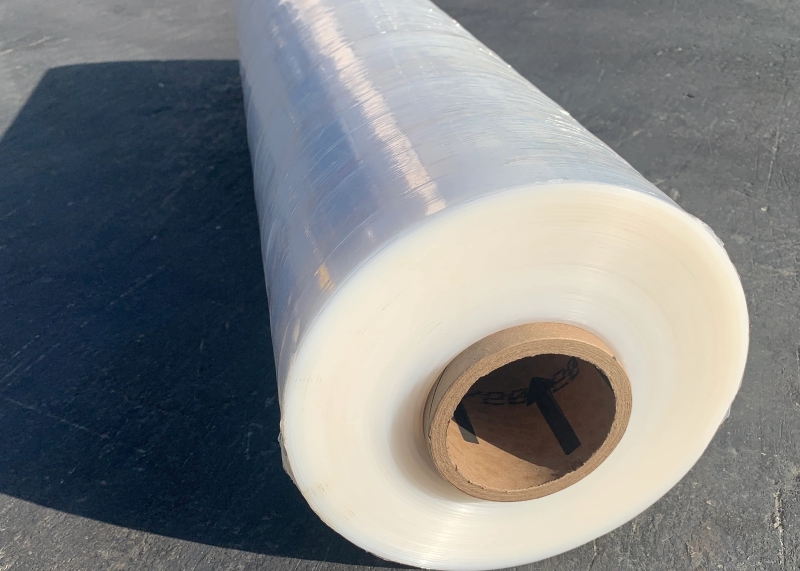
LLDPE is known for its flexibility, resilience, and high tensile strength, all of which are critical for effective industrial cling wrap. Its molecular structure allows it to stretch significantly without breaking, ensuring that products are tightly secured during transit or storage.
Industrial cling wrap made from LLDPE is widely used in logistics, manufacturing, and warehousing due to these material properties, making it an essential tool for businesses focused on stability and protection.
The manufacturing processes for industrial cling wrap play a crucial role in determining its properties, performance, and suitability for various applications. There are two primary methods used: cast extrusion and blown extrusion, each offering distinct advantages that impact transparency, strength, and durability.
Cast extrusion is a popular manufacturing method for industrial cling wrap, particularly valued for its transparency, smooth texture, and cost-efficiency. In this process, plastic pellets are melted and pushed through a flat die onto a chilled roller. As the hot plastic makes contact with the roller, it cools and solidifies, forming a clear, smooth sheet of cling wrap.
Blown extrusion is another primary process for manufacturing industrial cling wrap, known for producing a more durable and puncture-resistant film. In blown extrusion, melted plastic is pushed through a circular die and then inflated into a bubble. As the bubble expands, it cools slowly, resulting in a thicker, tougher film with improved cling.
Both manufacturing methods serve distinct purposes, allowing businesses to choose the type of industrial cling wrap best suited to their specific handling and storage needs.
The price of industrial cling wrap varies based on several key factors, including the materials used, the manufacturing process, and the specific type selected. Understanding these factors helps businesses choose the right cling wrap for their needs while managing costs effectively.
Several elements influence the price of industrial cling wrap, making it essential to consider the following factors when budgeting for large-scale usage:
The type of industrial cling wrap chosen can also significantly impact costs. Common types and their price considerations include:
To maximize cost efficiency when purchasing industrial cling wrap, consider these tips:
These factors and considerations allow for a strategic approach to purchasing industrial cling wrap, balancing performance with cost efficiency.
Industrial cling wrap is designed to meet the demands of large-scale applications, providing enhanced protection, stability, and ease of handling for heavy or bulky loads. When selecting industrial cling wrap, understanding the dimensions and sizing options is essential to ensure the most efficient and cost-effective solution.
Industrial cling wrap rolls are available in various dimensions to accommodate different load sizes and wrapping requirements. Common dimensions include:
Choosing the correct size of industrial cling wrap is essential for optimizing application efficiency and minimizing waste. Standard sizes are suitable for many general applications; however, custom sizing is available for businesses with unique needs.
Custom sizing can be advantageous when standard rolls are too narrow or too wide, allowing companies to avoid material waste and ensure secure packaging.
Selecting the best size of industrial cling wrap depends on several critical factors, ensuring both cost-effectiveness and optimal load security:
By assessing these factors, businesses can select the optimal dimensions of industrial size cling wrap that meets their specific requirements, ensuring effective protection and operational efficiency.
Industrial cling wrap and industrial strength cling film are designed to meet the rigorous requirements of industrial and commercial applications, ensuring that loads remain stable, secure, and protected throughout transport and storage. Industrial strength cling film, specifically, provides high resilience, making it an essential choice for heavy-duty or high-demand applications.
High-strength industrial cling wrap, often referred to as industrial strength cling film, is engineered to deliver superior performance in challenging environments. Unlike standard cling wraps, this high-strength film is formulated with enhanced materials and a thicker gauge, allowing it to handle heavier loads and withstand conditions that might compromise standard wraps.
Industrial strength cling film offers several benefits that make it a reliable choice for heavy-duty use, particularly in industries such as logistics, construction, and manufacturing where goods require robust protection.
Industrial strength cling film provides critical support for load stability, especially in demanding or high-impact situations. Its ability to withstand external forces while keeping loads firmly secured offers enhanced protection and safety.
Industrial strength cling film plays a vital role in protecting loads in heavy-duty settings, combining high durability, puncture resistance, and reliable cling to meet the demands of modern industrial environments.
Industrial cling wrap and industrial roll of Saran wrap are essential tools in various industries for securing and protecting products during transport and storage. These wraps are designed with durability and functionality in mind, offering specific advantages over household wraps in size, strength, and versatility.
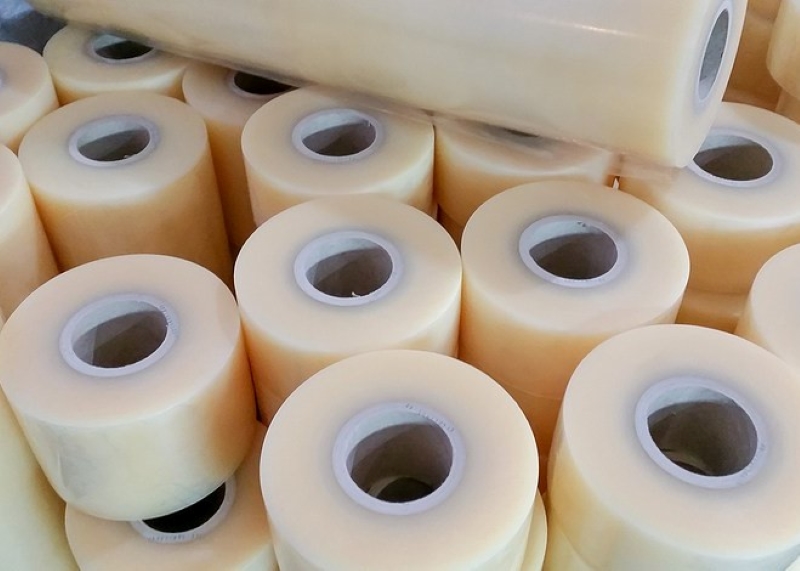
Industrial-sized rolls of Saran wrap provide a more durable and versatile solution than traditional household wraps. Created for larger applications, industrial rolls are typically much wider and longer, allowing them to cover more substantial items and reducing the frequency of roll changes in high-use environments, with options like orange Saran Wrap offering enhanced visibility for safety and identification.
Industrial cling wrap, including industrial Saran wrap, significantly differs from household versions in terms of specifications and performance.
Industrial cling wrap and Saran wrap find extensive use across different sectors where load stability and protection are critical. Some typical industries and applications include:
Industrial rolls of Saran wrap offer a versatile, strong, and efficient solution for these industries, catering to both standard and unique needs across large-scale operations.
Industrial cling wrap is a versatile tool used across multiple sectors to secure, protect, and stabilize a wide range of products. Different industries benefit from specific types of industrial cling wrap tailored to their unique requirements, enhancing safety and efficiency in transport, storage, and handling.
In warehousing and distribution, industrial cling wrap is essential for stabilizing pallet loads and ensuring safe handling from storage to final delivery. Its ability to tightly secure items together prevents shifting, damage, and loss during transport.
The food industry uses industrial cling wrap in various forms to maintain the freshness and safety of food products. Specific types like vented and anti-static cling wrap offer targeted protection depending on the product type.
In the construction and manufacturing sectors, industrial cling wrap serves to protect materials and equipment from environmental damage and to secure large or irregular loads. Its durability and strength are vital for safeguarding these heavy-duty items.
Industrial cling wrap is thus an invaluable resource across industries, providing the stability, protection, and efficiency required in warehousing, food handling, and manufacturing settings.
When selecting the right wrapping material for various applications, understanding the differences between industrial cling wrap and traditional stretch films is crucial. While both serve the purpose of securing goods, they differ significantly in their material composition, thickness, strength, and intended use. Industrial cling wrap is designed for heavy-duty, high-performance applications, whereas traditional stretch films are better suited for lighter, less demanding tasks. The table below highlights the key differences, allowing readers to make an informed choice based on their specific requirements.
| Factor | Industrial Cling Wrap | Traditional Stretch Films |
|---|---|---|
| Material Composition | Made from high-quality LLDPE for superior strength and durability. | Often made from standard polyethylene with basic performance. |
| Thickness (Gauge) | Typically 60+ gauge for heavy-duty applications. | Usually 40–50 gauge, suitable for lightweight wrapping. |
| Strength | High tensile strength, resistant to punctures and tears. | Moderate strength, prone to tears under heavy loads. |
| Elasticity | Greater stretchability for securing irregular or heavy loads. | Limited stretch, ideal for standard shapes and lighter items. |
| Applications | Ideal for pallet wrapping, industrial transport, and commercial goods. | Used for household packaging or light-duty commercial use. |
| Cost Efficiency | More expensive but cost-effective for heavy-duty needs. | Lower cost but less durable for demanding tasks. |
By comparing these aspects, it becomes evident that industrial cling wrap is the superior choice for demanding applications requiring strength, durability, and reliability.
Proper usage and maintenance of industrial cling wrap are essential to ensure its effectiveness, durability, and cost-efficiency. By following these precautions, businesses can maximize the performance of cling wrap while reducing wastage and ensuring safety.
Choose the Correct Type and Gauge
Proper Wrapping Techniques
Avoid Overexposure to Heat and UV Light
Handle with Care
Storage Conditions
Regular Inspection
Use Dispensers and Wrapping Machines Properly
Rotate Stock
By adhering to these precautions and maintenance practices, businesses can ensure that industrial cling wrap performs optimally, enhances load security, and remains a cost-effective solution for packaging and transportation needs.
The industrial cling wrap market is experiencing robust growth, driven by its indispensable role in packaging, logistics, and manufacturing industries. Over the past decade, the widespread use of polyethylene, a primary material in cling wrap, has established a strong foundation for its market dominance. This trend highlights the durable and reliable nature of industrial cling wrap, making it the preferred choice for securing goods across diverse sectors.
Industrial cling wrap holds a significant share of the global packaging market, particularly in sectors like food, logistics, and heavy industry. Its demand is bolstered by the growth of e-commerce, where efficient pallet wrapping and load stability are critical. The inclusion of multifunctional options—such as cling wrap, paper cling films, and folding cling films—has diversified the product range, catering to different operational needs. These variations allow businesses to choose wraps in various sizes, thicknesses, and even colors, ensuring flexibility for both industrial and specialized applications. The rise of environmentally friendly cling wraps is also contributing to market expansion, as companies adopt sustainable practices to align with global trends.
Industrial cling wrap is set to maintain its critical role in the packaging industry, with increasing demand fueled by its multifunctionality, sustainability, and adaptability. The shift towards eco-friendly solutions and innovative materials will ensure its relevance in a competitive, evolving market landscape.
Industrial plastic wrap is a highly durable, stretchable plastic film designed for securing and stabilizing products during storage and transportation. Unlike typical household wraps, industrial plastic wrap, also known as industrial cling wrap or stretch film, is engineered to withstand the demands of heavy-duty use in sectors such as warehousing, logistics, construction, and manufacturing. It is commonly made from linear low-density polyethylene (LLDPE), a material that offers high elasticity, puncture resistance, and excellent cling quality. The film stretches tightly around items or palletized goods, holding them firmly in place, reducing movement, and protecting products from dust, moisture, and other environmental factors. Industrial plastic wrap comes in various forms—cast, blown, pre-stretched, anti-static, UV-resistant, and vented wrap—each tailored to meet specific needs. Whether used to stabilize pallets in a warehouse, protect products in transit, or wrap large equipment on a construction site, industrial plastic wrap is an essential material for safe and efficient product handling.
While cling wrap and plastic wrap are often used interchangeably, there are key differences, especially when considering industrial applications. Cling wrap, primarily known for its tight, self-adhering quality, is typically thinner and sticks to surfaces without additional adhesive, making it ideal for covering food and small household items. In industrial settings, cling wrap is thicker, more durable, and designed to cling strongly to itself, securing loads of products on pallets or wrapping large items for added protection.
Plastic wrap is a broader term that encompasses various types of stretchable plastic films, including industrial cling wrap. Plastic wrap might not always have the same level of stretch or cling as industrial cling wrap, especially if it’s intended for simpler, everyday applications. In essence, industrial cling wrap is a specialized type of plastic wrap optimized for heavy-duty use, delivering enhanced stretchability, strength, and stability.
Plastic wrap and cling wrap are terms often used interchangeably, but they have subtle differences, especially in industrial contexts. Plastic wrap is a broader term encompassing all thin, plastic sheeting used for wrapping purposes, including packaging, industrial, and food-grade wraps. Cling wrap, on the other hand, specifically refers to a type of plastic wrap that sticks to surfaces or itself due to its elasticity.
In industrial settings, cling wrap is frequently used to secure loads on pallets, often referred to as stretch wrap. This type of wrap provides excellent load stability, elasticity, and clinginess. Industrial plastic wraps, such as shrink wrap, require heat to form a tight seal and are used for packaging products like electronics or boxed goods. While cling wrap is self-adhering, plastic wraps like shrink wrap are designed for applications where a heat-activated seal or durability is required.
In the context of industrial plastic wrap, 80 gauge is thicker than 60 gauge. The gauge measurement refers to the thickness of the material, with higher numbers indicating greater thickness. For example, 60-gauge wrap is approximately 0.6 mils (thousandths of an inch) thick, while 80-gauge wrap is 0.8 mils thick.
Thicker plastic wrap, like 80 gauge, is commonly used in industrial applications where greater strength and durability are required. It is ideal for securing heavier loads or sharp-edged products. On the other hand, 60-gauge wrap is better suited for lighter loads or situations where flexibility and cost-effectiveness are more important.
Industrial applications often require thicker wraps, such as 80 gauge or higher, to withstand the stress of transportation and storage, ensuring that loads remain intact and protected against external factors like moisture or punctures.
Industrial plastic wrap is typically made of low-density polyethylene (LDPE), linear low-density polyethylene (LLDPE), or a blend of these materials. These plastics are chosen for their flexibility, strength, and elasticity, making them suitable for various applications like pallet wrapping and packaging.
LLDPE is the most common material for stretch wrap due to its excellent stretchability and tear resistance. It allows the wrap to cling tightly to itself or the items being secured. Shrink wrap, another type of industrial plastic wrap, is often made from LDPE or polyvinyl chloride (PVC) and shrinks tightly around items when heat is applied.
The manufacturing process involves melting plastic resin, extruding it into thin sheets, and cooling it rapidly. Additives may be included to enhance properties like UV resistance, clarity, or puncture resistance, making industrial plastic wrap versatile for transportation and storage in various industries.
Movers typically use stretch wrap, a type of industrial cling wrap, to secure furniture, appliances, and other items during transport. This wrap is made of linear low-density polyethylene (LLDPE) and is specifically designed to cling to itself, providing a tight, protective seal.
Stretch wrap is ideal for movers because it offers excellent elasticity, allowing it to conform to the shape of irregular objects while holding them securely in place. It protects furniture from dust, dirt, and scratches, and prevents items like drawers or doors from opening during transit. Movers often use thicker wraps, like 80 or 90 gauge, for heavier or sharp-edged objects to ensure durability.
In addition to stretch wrap, movers may also use furniture pads or blankets under the wrap for added cushioning. The self-adhering nature of the wrap eliminates the need for adhesives or tape, reducing damage risks.
The primary difference between cast and blown stretch wrap lies in their manufacturing processes, properties, and applications. Cast stretch wrap is produced using a continuous process where molten plastic is extruded onto a cooled roller. This method results in a smoother, quieter film with excellent clarity and easy unwinding.
Blown stretch wrap is created by blowing heated plastic resin into a bubble, then cooling it. This process gives blown wrap greater strength, puncture resistance, and elasticity, but it is noisier to unwind and less transparent.
In industrial settings, cast stretch wrap is preferred for applications requiring high visibility, such as scanning barcodes. Blown stretch wrap, on the other hand, is better suited for securing heavy or irregular loads due to its superior durability. The choice between the two depends on the specific requirements of load stability, environmental factors, and ease of use.
Cling film, often made of low-density polyethylene (LDPE) or polyvinyl chloride (PVC), begins to soften and melt at approximately 220–250°F (104–121°C). In industrial applications, the melting point of cling wrap is critical when using heat-sealing or shrink-wrapping equipment.
For industrial cling wrap used in palletizing or packaging, temperature resistance is usually optimized. Stretch wraps designed for industrial use may tolerate higher temperatures without deforming, as they are engineered for exposure to environmental heat during transit or storage.
However, cling wrap should not be exposed to temperatures exceeding its melting point, as it can compromise the load’s stability or release harmful fumes. Specialized high-temperature wraps are available for applications requiring exposure to extreme heat, such as shipping goods in hot climates or wrapping items undergoing heat treatment.
In terms of thickness, 14 gauge is heavier than 16 gauge. In industrial cling wrap, a lower gauge number corresponds to a thicker, more durable film. This concept is similar across materials, whether it’s plastic or metal.
For example, a 14-gauge industrial wrap is thicker and offers greater strength, making it suitable for heavy-duty applications like securing large or irregularly shaped pallets. It provides better resistance to punctures and tears, ideal for protecting sharp-edged or heavy loads.
On the other hand, 16-gauge wrap is thinner and lighter, which makes it more cost-effective and easier to handle for lighter loads or short-term storage. The choice of gauge depends on the load’s weight, shape, and transportation needs, with heavier gauges offering increased stability and protection during industrial operations.

My name is James Thompson, and I’m the editor of this website dedicated to Stretch Film, Pallet Wrap, and Stretch Wrap products.
My passion for packaging began when I noticed the challenges companies face in securing their products efficiently for transportation and storage. This inspired me to delve deep into the world of stretch films and pallet wraps, exploring the latest technologies and best practices.
I aim to provide valuable insights, practical tips, and up-to-date industry trends to assist you in making informed decisions. Whether you’re a small business owner or part of a large corporation, my goal is to support you in optimizing your operations and ensuring your products reach their destination safely.
Thank you for visiting, and I look forward to accompanying you on your journey toward better packaging solutions.
Comments are closed